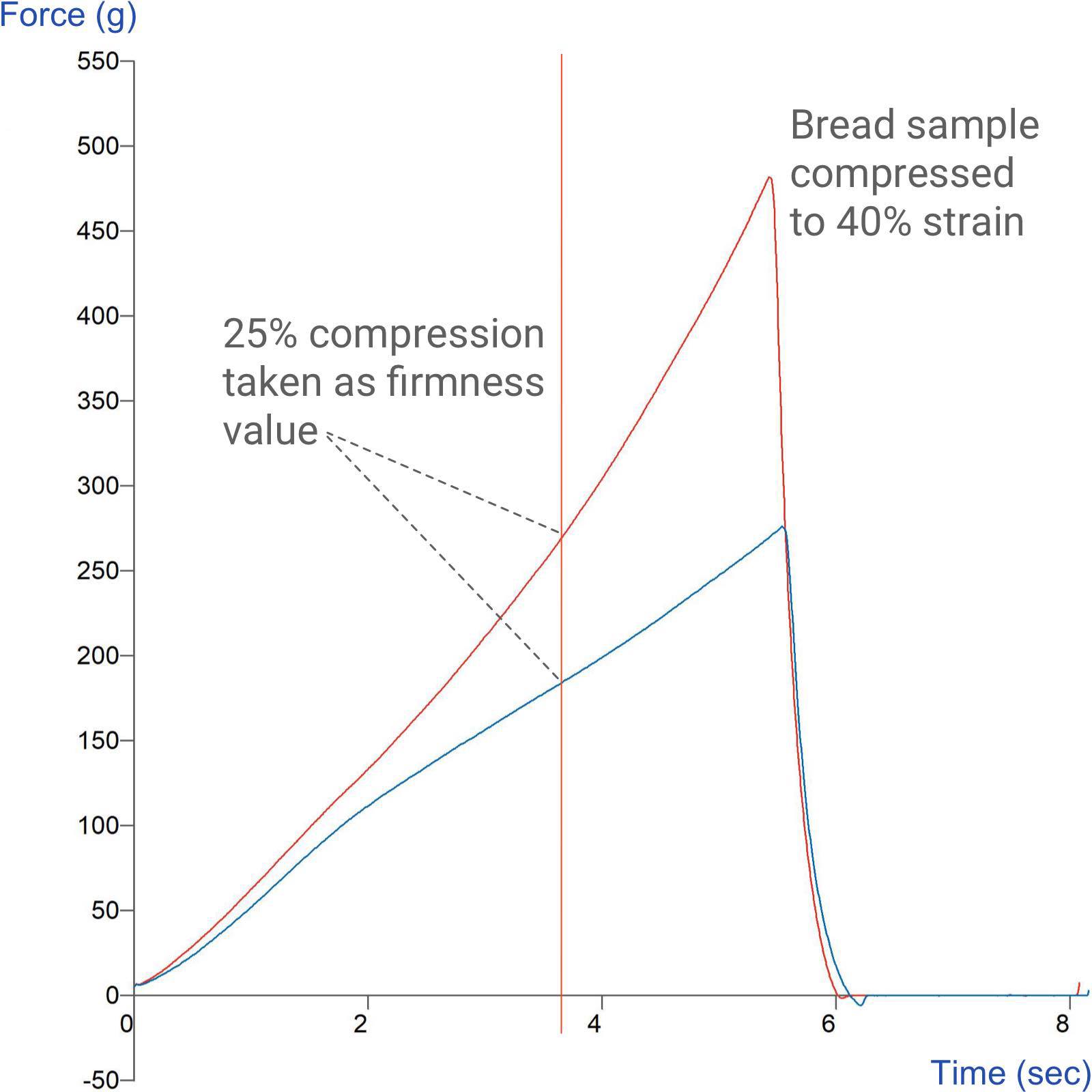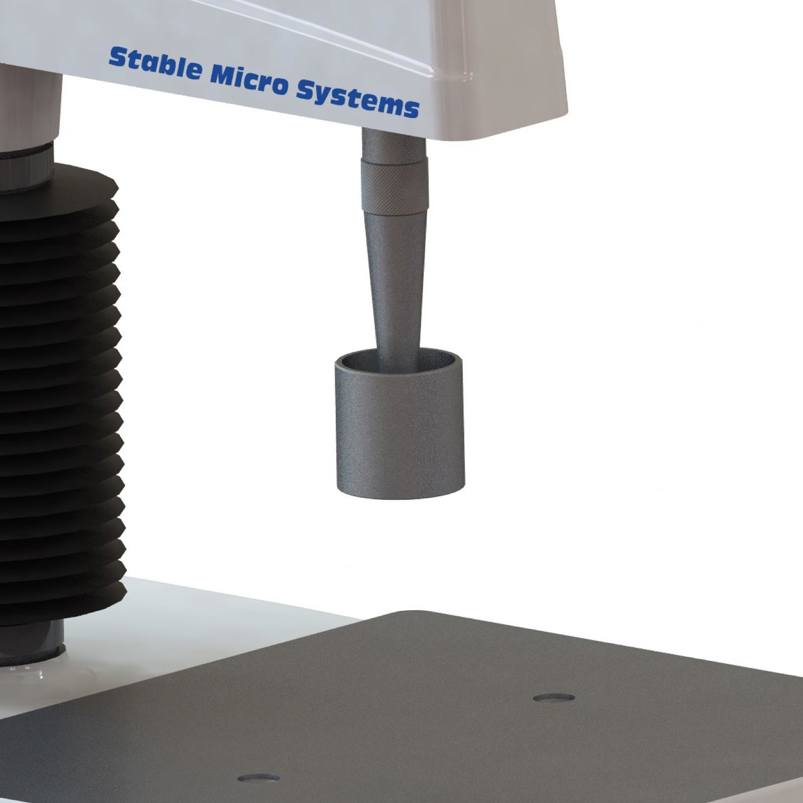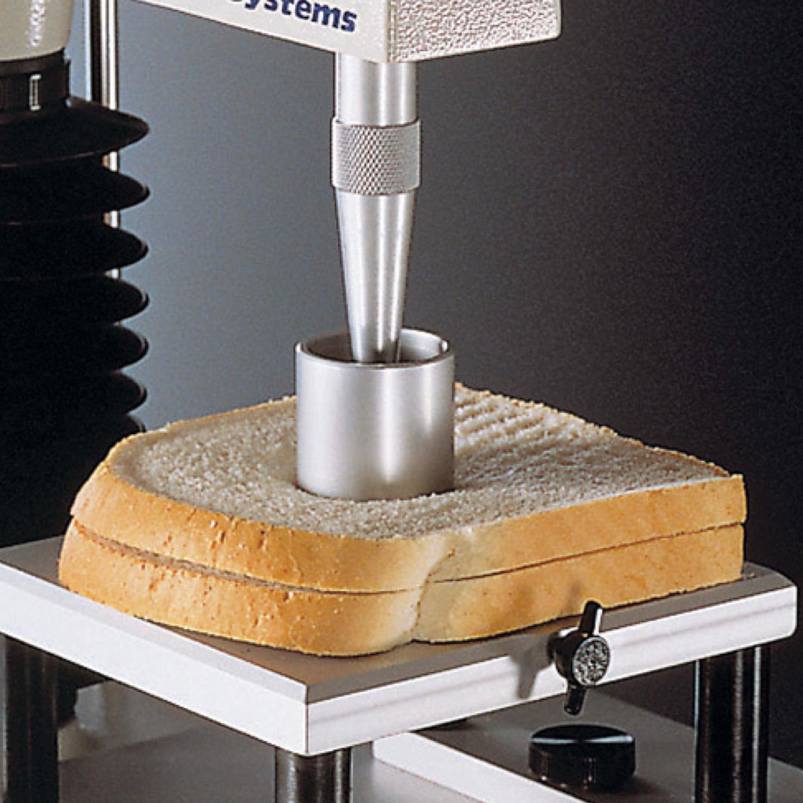Product overview
A significant area of rheological importance in breadbaking is final product texture. Many components are part of the texture of a slice of bread, such as firmness, stickiness, and springiness, but firmness is the one most often measured. The major reason for measuring firmness is the strong correlation between crumb firmness and consumer perception of the freshness of white pan bread.
The American Association of Cereal Chemists (AACC) published a standard method for measuring the firmness of a slice of bread (AACC 74-09, 1986), which stipulates the measurement of a standard bread thickness (25mm) and measures the force to compress to 25% of the height.
This probe has a radiused (non-sharp) perimeter which avoids cutting the sample during the testing. Sample preparation is quick and interpretation is easy.
Of great importance in testing is the need to avoid the areas close to the crust, as they will have a disproportionately large effect on the compressibility test. Some methods avoid this problem by removing the crust immediately before compression testing, but this practice can be extremely time consuming. Another factor that must be taken into account is the variation in compressibility that is found at different locations in a loaf of bread. The crumb is firmer in the centre of the loaf than it is towards the ends. This variation is usually accounted for by consistently testing slices from the same location in a loaf. The amount of compression used in the test is another variable. When a slice of bread is compressed, there is a point at which the elastic limit of the crumb is exceeded and the slope of the compression curve changes. It is more desirable, in terms of reproducibility, to use conditions that result in readings being taken after that change of slope.
Typical research studies measuring bread firmness using this method have looked at, for instance, the effect of certain surfactants, the use of different flours (e.g. wholemeal), the use of new enzymes, the effects of wheat variety and processing conditions, and the addition of other ingredients (e.g. honey) to retard staling.
How does the 36mm radiused Cylinder Probe work?
Typical graph

Technical information
Ideal sample form
Self-supporting solid materials.
Benefits and limitations
- A radiused (non-sharp) perimeter on this Cylinder Probe avoids cutting the sample during the testing.
- Sample preparation is quick and interpretation is easy.
Installation
Full installation instructions are provided within the Education Zone of the latest Exponent/Connect software version and on the technical information sheet accompanying this product.
Chemical compatibility
Stable Micro Systems probes and attachments are commonly made from four materials: anodised aluminium (AA6082 T6), stainless steel (316 T), Delrin (acetyl copolymer) and Perspex (polycarbonate).
In general use, probes and attachments made from these materials will be suitable for testing food products and inert non-food materials.
The four materials listed above are not universally resistant to all types of chemicals and as such the compatibility of the probe/attachment material with the product (to be tested) must be established to prevent damage to the probes and attachments. If the compatibility of the product with the probe is unknown to the customer then the chemical information about the product (Material Safety Data Sheet or Product Data Sheet) should be submitted to Stable Micro Systems. Stable Micro Systems will then assess the suitability of the probe/attachment material for use with the product and advise accordingly. If this advice is not sought then Stable Micro Systems will not accept liability for probes/attachments damaged by chemical attack from the product being tested.
Cleaning and maintenance
All probes and attachments may be cleaned in warm (or hand hot) water using a mild detergent. A soft brush may be used but abrasive cleaning aids should be avoided. Stable Micro Systems products should not be microwaved or cleaned in a dishwasher.
Screw threads should be lightly lubricated after drying using a light lubricant, e.g. petroleum jelly, mineral oil. This will aid the fitting and unscrewing of the item. Each component of a probe or attachment should be wrapped separately when stored, to avoid scratching or chipping. This will safeguard against any unnecessary damage to the accessory.


